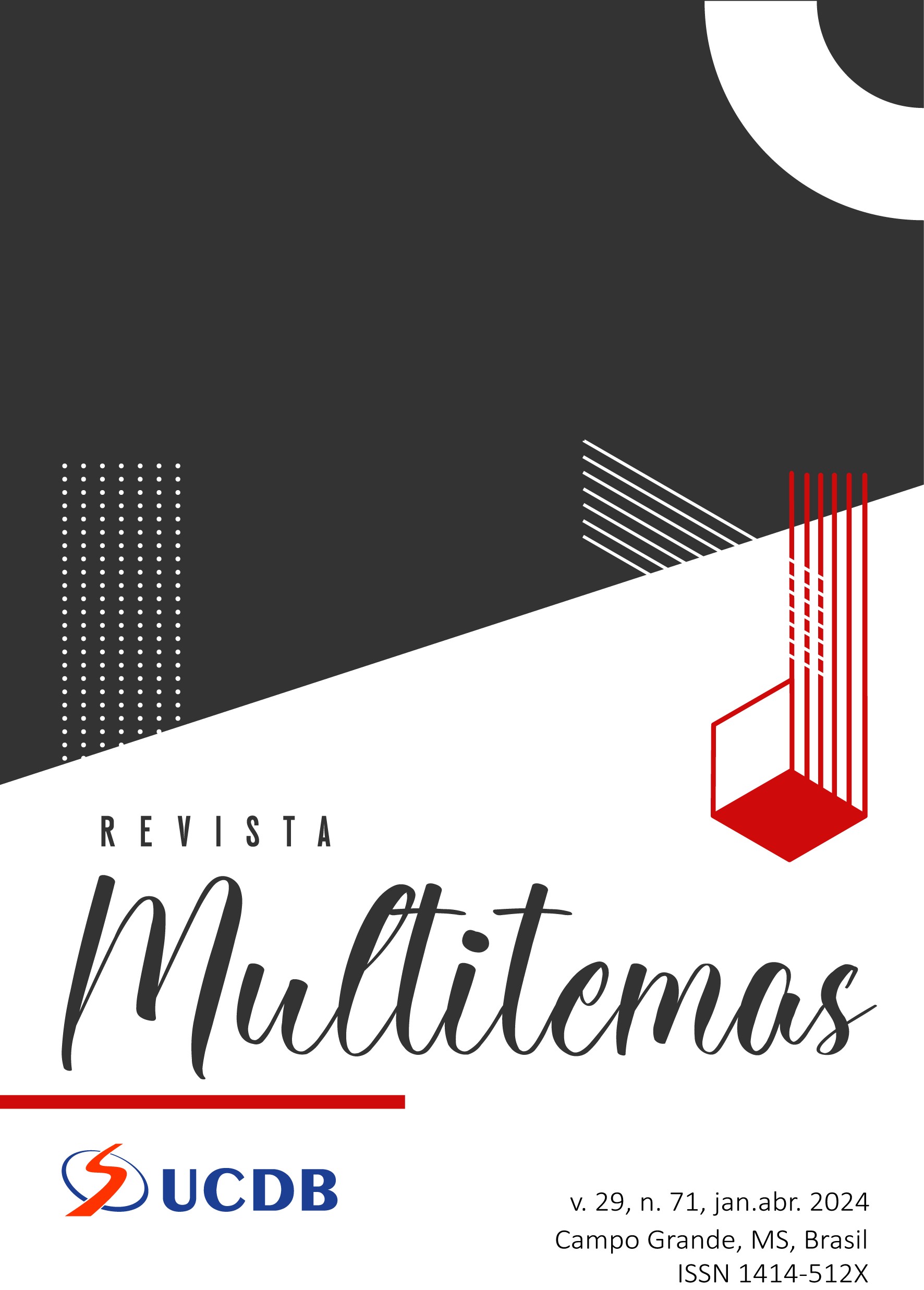Desenvolvimento do aplicativo móvel em disfunções dermatológicas e estéticas
DOI:
https://doi.org/10.20435/multi.v29i71.4280Palavras-chave:
aprendizagem móvel, tecnologia, inovação, saúde estética, aplicativoResumo
A população, em sua maioria brasileira, apresenta distúrbios comuns entre os jovens e adultos denominados doenças estéticas, como, por exemplo, acne, melasma, psoríase e erupção cutânea. Diante desse cenário, o desenvolvimento de um aplicativo móvel tornou-se viável, pois a tecnologia cresce exponencialmente e, ao mesmo tempo, há também um maior interesse em desenvolver novas formas de disseminar o conteúdo de maneira prática. Neste estudo, o objetivo era ajudar não profissionais, acadêmicos e profissionais de saúde e estética. Uma grande porcentagem era de jovens (74,7%), com idade entre 18 e 29 anos, mas o alvo do aplicativo não é exclusivo desse perfil. Nossa pesquisa resultou em boas métricas, entre elas, o público estudado tem interesse em pagar para ter o aplicativo em seu smartphone. Assim, o atlas virtual das disfunções estéticas demonstrou ser uma ferramenta para não profissionais e profissionais auxiliando na aquisição de informações.
Referências
BAYOU, M. E.; KORVIN, A. Measuring the leanness of manufacturing systems—a case study of Ford Motor Company and General Motors. Journal of Engineering and Technology Management, [s.l.], v. 25, n. 4, p. 287–304, 2008.
BOUDREAUX, E. D.; WARING, M. E.; HAYES, R. B.; SADASIVAM, R. S.; MULLEN, S.; PAGOTO, S. Evaluating and selecting mobile health apps: strategies for healthcare providers and healthcare organizations. Translational behavioral medicine, [s.l.], v. 4, n. 4, p. 363-71, dez. 2014.
DITZZ, Á. J. M.; GOMES, G. R. R. A utilização do aplicativo plickers no apoio à avaliação formativa. Revista Tecnologias na Educação, [s.l.], ano 9, v. 19, p. 1-13, jul. 2017.
DYER, I. C. An examination of typographic standards and their relevance to contemporary user-centred web and application design. In: RAU, P. L. P. (Ed.). Cross-Cultural Design: 6th International Conference, CCD 2014 held as part of HCI International 2014. Heraklion: Springer International Publishing, 2014.
GARG, S.; BALIYAN, N. Comparative analysis of Android and iOS from security viewpoint. Computer Science Review, [s.l.], v. 40, n. 2, 2021.
GOUVEIA, E. L.; ROAZZI, A.; MOUTINHO, K.; DIAS, M. G. B. B. Raciocínio condicional: influências pragmáticas. Estudos de Psicologia, Natal, v. 7, p. 217-25, 2002.
KORRAPATI, N. H.; PERERA, M. H.; SWAMY, P. K.; RANGANATH, P. A.; ANKIREDDY, K.; THOMAS, S. A.; BATHALA, R. P. Skincare Routine During The COVID-19 Pandemic: An Online Survey. International Journal of Progressive Sciences and Technologies, [s.l.], v. 5, n. 2, 2021.
ŁOPACIUK, A.; ŁOBODA, M. Global beauty industry trends in the 21st century. In: MANAGEMENT, KNOWLEDGE AND LEARNING INTERNATIONAL CONFERENCE, 2013, Zadar. Anais [...]. Zadar: Make Learn, 2013.
MILNE-IVES, M.; LAM, C.; COCK, C.; VELTHOVEN, M. H. V.; MEINERT, E. Mobile apps for health behavior change in physical activity, diet, drug and alcohol use, and mental health: systematic review. JMIR mHealth and uHealth, [s.l.], v. 8, n. 3, mar. 2020.
PECORELLI, N. et al. An app for patient education and self-audit within an enhanced recovery program for bowel surgery: a pilot study assessing validity and usability. Surgical Endoscopy, [s.l.], v. 32, n. 5, p. 2263-273, 2018.
VENTOLA, C. L. Mobile devices and apps for health care professionals: uses and benefits. Pharmacy and Therapeutics P & T, [s.l.], v. 39, n. 5, p. 356-64, maio 2014.
XHAFERI, B.; XHAFERI, G. Online learning benefits and challenges during the COVID 19 - pandemic-students’ perspective from SEEU. SEEU Review, [s.l.], v. 15, n. 1, p. 86-103, 2020.
WILMER, H. H.; SHERMAN, L. E.; CHEIN, J. M. Smartphones and cognition: a review of research exploring the links between mobile technology habits and cognitive functioning. Frontiers in psychology, [s.l.], v. 8, p. 605, 2017.
Downloads
Publicado
Como Citar
Edição
Seção
Licença
Copyright (c) 2023 Wellington Pinto, Pedro Henrique de Oliveira Cardoso, Ludovico Migliolo

Este trabalho está licenciado sob uma licença Creative Commons Attribution 4.0 International License.
Os artigos publicados na Revista Multitemas têm acesso aberto (Open Access) sob a licença Creative Commons Attribution, que permite uso, distribuição e reprodução em qualquer meio, sem restrições desde que o trabalho original seja corretamente citado.
Direitos Autorais para artigos publicados nesta revista são do autor, com direitos de primeira publicação para a revista. Em virtude de aparecerem nesta revista de acesso público, os artigos são de uso gratuito, com atribuições próprias, em aplicações educacionais e não-comerciais.


